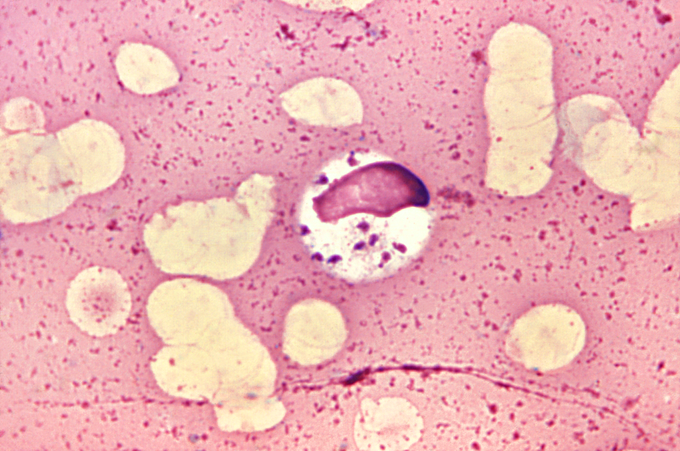14.6B: Protozoa
- Page ID
- 12005
Protozoa are a diverse group of unicellular eukaryotic organisms, many of which can cause disease.
- Compare and contrast the proliferative and dormant stages in pathogenic protozoa and the diseases protazoa cause
Key Points
- Examples of human diseases caused by protozoa are: malaria, amoebiasis, giardiasis, toxoplasmosis, cryptosporidiosis, trichomoniasis, Chagas disease, leishmaniasis, and dysentery.
- The life stages of these protozoa play a major role in their ability to function as pathogens and infect various hosts.
- Protozoa were regarded as the partner-group of protists to protophyta, which have plant-like behavior (e.g., photosynthesis). In general, protozoa are referred to as animal-like protists because they are capable of movement, or motile.
- Some protozoa are human parasites, causing diseases.
Key Terms
- trophozoite: A protozoan in the feeding stage of its life cycle.
- protozoa: Protozoa are a diverse group of unicellular eukaryotic organisms, many of which are motile. Originally, protozoa had been defined as unicellular protists with animal-like behavior, e.g., movement. Protozoa were regarded as the partner group of protists to protophyta, which have plant-like behavior, e.g., photosynthesis.
- dormant cyst: A resting or dormant stage of a microorganism
- cyst: a pouch or sac without opening, usually membranous and containing morbid matter, which develops in one of the natural cavities or in the substance of an organ
Protozoa (or protozoans) are a diverse group of unicellular eukaryotic organisms, many of which are motile. Originally, protozoa had been defined as unicellular protists with animal-like behavior (e.g., movement). Protozoa were regarded as the partner-group of protists to protophyta, which have plant-like behavior (e.g., photosynthesis). In general, protozoa are referred to as animal-like protists because they are capable of movement, or motile. While there is no exact definition for the term protozoa, it often refers to a unicellular heterotrophic protist, such as the amoebas and ciliates.

Protozoa can display pathogenicity and are the cause of various diseases. The life stages of these protozoa play a major role in their ability to function as pathogens and infect various hosts. Some protozoa have life stages alternating between proliferative stages (e.g., trophozoites ) and dormant cysts. As cysts, protozoa can survive harsh conditions, such as exposure to extreme temperatures or harmful chemicals, or long periods without access to nutrients, water, or oxygen for a period of time. The ability of protozoa to thrive under extreme environments contributes to their ability to evade immune system responses, drug therapies and survive for prolonged periods of time before infection. Being a cyst enables parasitic species to survive outside of a host, and allows their transmission from one host to another. When protozoa are in the form of trophozoites they actively feed. The conversion of a trophozoite to cyst form is known as encystation, while the process of transforming back into a trophozoite is known as excystation.

Protozoa such as the malaria parasites (Plasmodium spp. ), trypanosomes, and leishmania are also important as parasites and symbionts of multicellular animals. Examples of human diseases caused by protozoa are: malaria, amoebiasis, giardiasis, toxoplasmosis, cryptosporidiosis, trichomoniasis, Chagas disease, leishmaniasis, and dysentery. The life cycle of protozoan are successful based on successful transmission between hosts and host and environment. Infection and disease by protozoan parasites are often times associated with developing countries with poor hygiene and sanitation conditions that may promote transmission of these protozoa.

